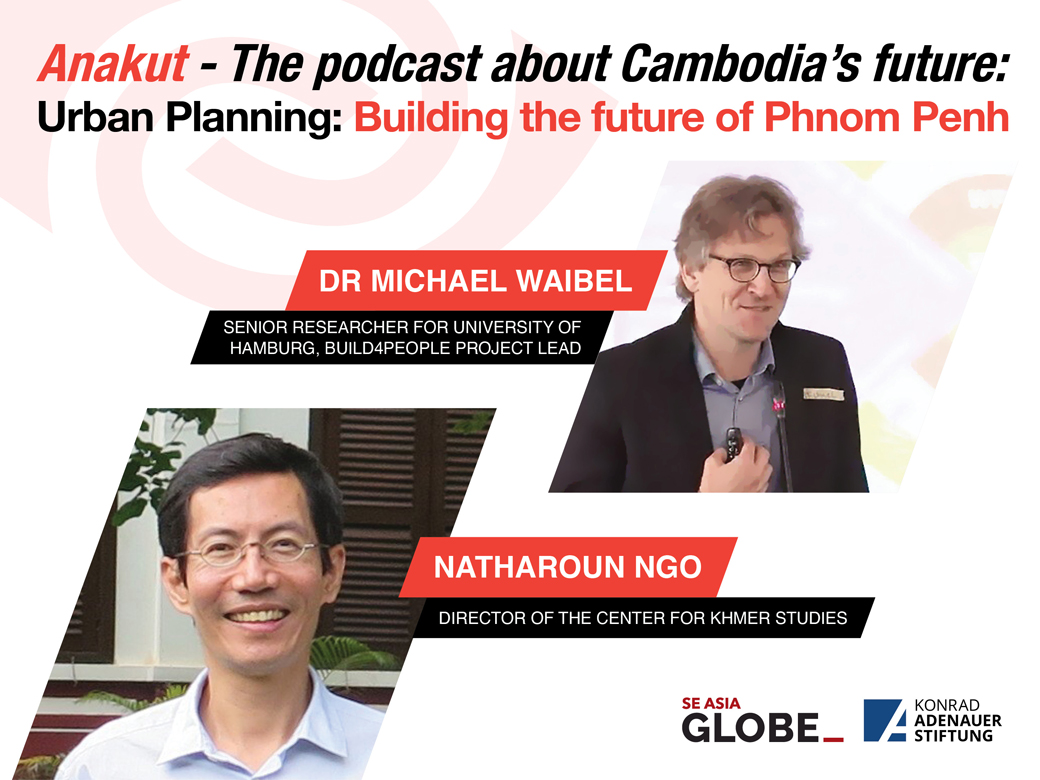Hello and welcome to the finale of the Anakut podcast: Season 2.
And what a season it’s been! Eight episodes, each on a different big subject for modern Cambodia, and 16 guests to guide us through. I can speak for the rest of the Anakut team when I say it’s been a great ride for all of us, and we hope the same for you.
We wanted to end the season on a high point, and I’d say our last two guests helped us do just that. This week’s episode is all about urbanisation, a topic near and dear to us in bustling Phnom Penh. Anyone who’s spent any time at all in the city can spot pretty quickly its drive for reinvention, and the hectic pace of new construction over the past decade or so has done just that.
The pace of change in Cambodia’s biggest city can be a little disorienting, but Thina and I were determined to find whatever order is in the middle of it all. To help us get there, we invited on some true city-folk: Ngo Natharoun, head of the Center for Khmer Studies, a research centre that focuses on many key issues of urban development, and Michael Waibel, researcher and lecturer at the University of Hamburg and lead of the Build4People urbanism project here in Phnom Penh.
Natharoun led us off with a rundown of just how much the city has grown. By some counts, he told us Phnom Penh roughly doubled in population over the past decade to reach about 3 million people today. Since the 1990s, he added, the physical radius from the city’s centre to its outskirts has also doubled, from just about 5 kilometres to more than 10 kilometres and counting.
The physical radius from the city’s centre to its outskirts has also doubled, from just about 5 kilometres to more than 10 kilometres and counting
To get around this sprawling cityscape, Phnom Penhers are riding and driving like never before. Natharoun told us the Cambodian government counts at least 2 million motorised vehicles in the city, a number increasing at an annual rate of 11%.
Maybe the most obvious sign of all this growth are the high-rises dotting the skyline in various states of completion. But Michael and Natharoun led us to consider the rising prominence of the borey, Cambodia’s brand of self-contained, often-gated housing developments, and its implications for the future of Phnom Penh’s urbanisation.
From there, we transitioned into considerations of rising inequality as it relates to the cityscape and then, to cap it all off, looked into that hazy future to consider how current trends could manifest into the city of tomorrow
You’ll notice this episode is a little longer than the others, but I think you’ll find it’s a spirited conversation with plenty to grab onto. And hey, besides, this is the season finale we’re talking about!
I want to thank you all for following along with us on this Anakut journey. It’s been a blast taking to the airwaves for two seasons so far. We’ll see about S3 (here’s hoping) but for now, scroll back up and hit that play button!
All episodes of the podcast can be found on our Anakut webpage, Amazon, Apple, Google and Spotify.


